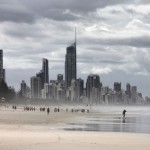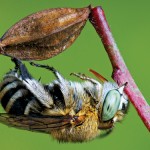
Golden orb spiders construct large, strong, vertical orb webs. Image: Shutterstock.
It sounds like it should be a black-and-white horror movie, not a scientific investigation.
Researchers from NASA are sending spiders into space to investigate whether they spin their webs differently in a microgravity environment.
The investigation, known as Commercial Generic Bioprocessing Apparatus Science Insert-05 (CSI-05), will take place on the International Space Station. The stars of the investigation are two golden orb spiders (Nephila clavipes), which will be transferred from the space shuttle Endeavour to the space station.
Once on board, the spiders’ individual habitats will be placed in the Commercial Generic Bioprocessing Apparatus. This will maintain a consistent temperature, humidity and lighting cycle for both the spiders and their sustenance supply of fruit flies.
This is in fact the second spider investigation on the International Space Station, following CSI-03, which also featured the lifecycle of a painted lady butterfly in space alongside the spiders. Scientists are hoping the sequel will top the original, which was restricted to eight days due to the fruit flies sliming the observation window.
As with all sequels, the scientists have learned from the original’s production process and can correct these mistakes. This time the fruit flies will travel in a separate compartment and will be slowly (approximately every four days) introduced into the spiders’ habitats.
But the fruit flies aren’t just along to provide a food source for the spiders. They will also star in a secondary study examining their mobility and growth in a microgravity environment.
The investigation should run for 45 days and the results will help scientists understand the behavioural role of gravity for the spiders and fruit flies. Stefanie Countryman, coordinator for CSI-05 said in the press release “I think people can relate to everyday insects and they can understand why the experiment is of interest.
“Plus, the visual aspects of this experiment make it very appealing to the general public.”






